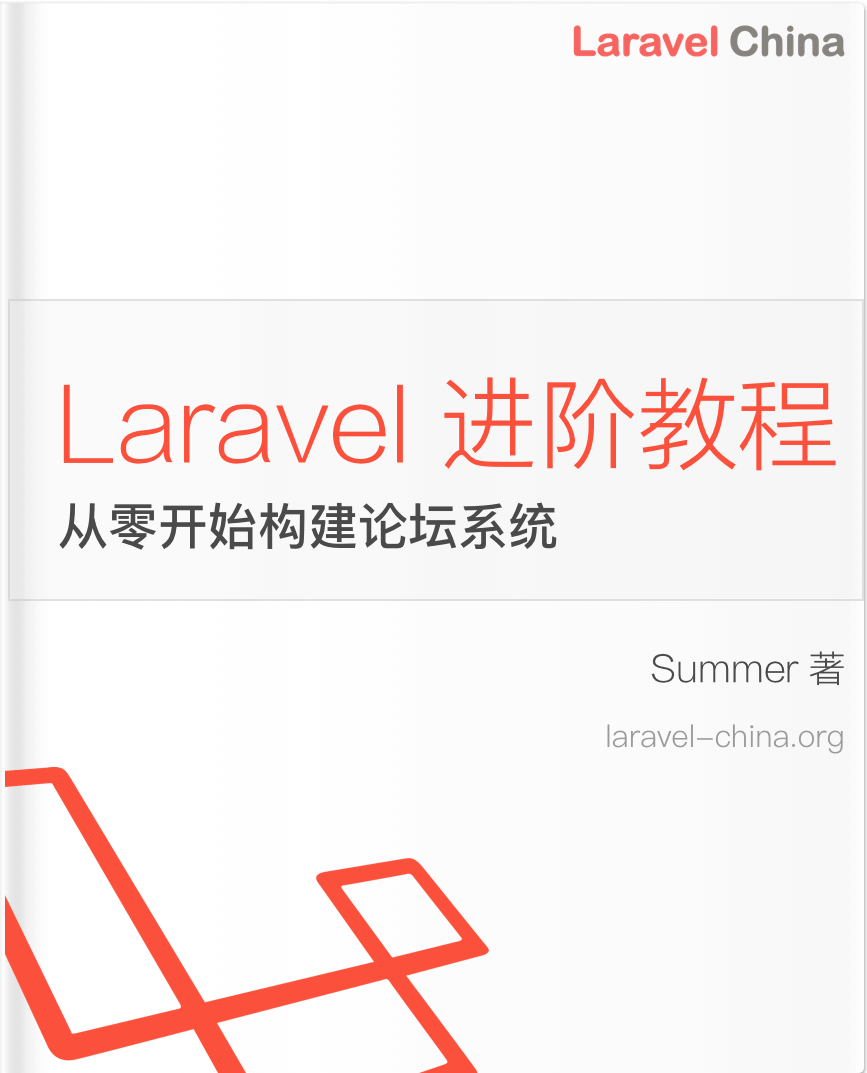查询构造器
数据库:查询构建器
- 简介
- 运行数据库查询
- Select 语句
- 原始表达式
- 连接 (Joins)
- 联合 (Unions)
- 基础 Where 子句
- 高级 Where 子句
- 排序、分组、限制和偏移
- 条件子句
- 插入语句
- 更新语句
- 删除语句
- 悲观锁
- 可重用的查询组件
- 调试
简介
Laravel 的数据库查询构建器提供了一个方便、流畅的接口,用于创建和运行数据库查询。
它可以用来执行你应用程序中的大多数数据库操作,并且与 Laravel 支持的所有数据库系统完美兼容。
Laravel 的查询构建器使用 PDO 参数绑定 来保护你的应用程序免受 SQL 注入攻击。
对于传递给查询构建器的查询绑定字符串,无需进行清理或过滤。
[!警告]
PDO 不支持绑定列名。因此,你绝不应该允许用户输入来决定查询中引用的列名,包括 “order by” 子句中的列。
运行数据库查询
从表中检索所有记录
可以使用 DB facade 提供的 table 方法开始查询。table 方法为指定表返回链式查询构造器实例,允许在查询上链接更多约束,最后使用 get 方法检索查询结果:
<?php
namespace App\Http\Controllers;
use Illuminate\Support\Facades\DB;
use Illuminate\View\View;
class UserController extends Controller
{
/**
* Show a list of all of the application's users.
*/
public function index(): View
{
$users = DB::table('users')->get();
return view('user.index', ['users' => $users]);
}
}get 方法返回包含查询结果的 Illuminate\Support\Collection 实例,每个结果都是 PHP stdClass 对象的实例。可以将列作为对象的属性来访问每个列的值:
use Illuminate\Support\Facades\DB;
$users = DB::table('users')->get();
foreach ($users as $user) {
echo $user->name;
}[!注意]
Laravel 集合提供了各种及其强大的方法来映射和裁切数据。有关 Laravel 集合的更多信息,[查看 集合文档 ]((learnku.com/docs/laravel/12.x/coll... "查看 集合文档 ")。
从表中检索单行或单列
如果只需要从数据库表中检索单行,可以使用 DB facade 中的 first 方法。 此方法将返回单个 stdClass 对象:
$user = DB::table('users')->where('name', 'John')->first();
return $user->email;如果您想从数据库表中检索单行数据,但在找不到匹配行时抛出 Illuminate\Database\RecordNotFoundException 异常,可以使用 firstOrFail 方法。如果未捕获 RecordNotFoundException 异常,系统将自动向客户端返回 404 HTTP 响应:
$user = DB::table('users')->where('name', 'John')->firstOrFail();如果你不需要整行,可以使用 value 方法从记录中提取单个值。此方法将直接返回列的值:
$email = DB::table('users')->where('name', 'John')->value('email');要通过 id 列检索单行,使用 find 方法:
$user = DB::table('users')->find(3);获取某一列的值列表
如果要检索包含单个列值的 Illuminate\Support\Collection 实例,则可以使用 pluck 方法。在此示例中,将检索 user 表中 title 的集合:
use Illuminate\Support\Facades\DB;
$titles = DB::table('users')->pluck('title');
foreach ($titles as $title) {
echo $title;
}可以通过向 pluck 方法提供第二个参数来指定结果集中应该用作 key 的列:
$titles = DB::table('users')->pluck('title', 'name');
foreach ($titles as $name => $title) {
echo $title;
}分块结果
如果需要处理数千条数据库记录,可以考虑使用 DB facade 提供的 chunk 方法。此方法每次检索一小块结果,并将每个块传入闭包进行处理。例如,每次以 100 条记录为块检索整个 users 表:
use Illuminate\Support\Collection;
use Illuminate\Support\Facades\DB;
DB::table('users')->orderBy('id')->chunk(100, function (Collection $users) {
foreach ($users as $user) {
// ...
}
});可以通过从闭包中返回 false 来停止处理其余的块:
DB::table('users')->orderBy('id')->chunk(100, function (Collection $users) {
// Process the records...
return false;
});如果在对结果进行分块时更新数据库记录,那分块结果可能会以意想不到的方式更改。如果计划在分块时更新检索到的记录,最好使用 chunkById 方法。此方法将根据记录的主键自动对结果进行分页:
DB::table('users')->where('active', false)
->chunkById(100, function (Collection $users) {
foreach ($users as $user) {
DB::table('users')
->where('id', $user->id)
->update(['active' => true]);
}
});由于 chunkById 和 lazyById 方法会向执行的查询添加它们自己的 「where」 条件,因此你通常应该 逻辑分组 自己的条件到一个闭包中:
DB::table('users')->where(function ($query) {
$query->where('credits', 1)->orWhere('credits', 2);
})->chunkById(100, function (Collection $users) {
foreach ($users as $user) {
DB::table('users')
->where('id', $user->id)
->update(['credits' => 3]);
}
});[!警告]
当在更新或删除块回调中的记录时,对主键或外键的任何更改都可能影响块查询。这可能会导致记录未包含在分块结果中。
延迟流式结果
lazy 方法的工作原理类似于 chunk 方法,因为都是以块的形式执行查询。但是,lazy() 方法不是将每个块传递给回调,而是返回LazyCollection ,可以以单个流的形式与结果进行交互:
use Illuminate\Support\Facades\DB;
DB::table('users')->orderBy('id')->lazy()->each(function (object $user) {
// ...
});再一次说明,如果你计划在遍历已检索的记录时更新它们,最好改用 lazyById 或 lazyByIdDesc 方法。这些方法会基于记录的主键自动分页结果:
DB::table('users')->where('active', false)
->lazyById()->each(function (object $user) {
DB::table('users')
->where('id', $user->id)
->update(['active' => true]);
});[!警告]
当在遍历记录时更新或删除它们时,对主键或外键的任何更改都可能影响分块查询。这可能会导致某些记录未被包含在结果中。
聚合
查询构建器还提供了多种方法来获取聚合值,比如 count、max、min、avg 和 sum。你可以在构建查询后调用这些方法:
use Illuminate\Support\Facades\DB;
$users = DB::table('users')->count();
$price = DB::table('orders')->max('price');当然,你也可以将这些方法与其他子句结合,以精细化地计算聚合值:
$price = DB::table('orders')
->where('finalized', 1)
->avg('price');判断记录是否存在
与其使用 count 方法来判断是否存在符合查询条件的记录,你可以使用 exists 和 doesntExist 方法:
if (DB::table('orders')->where('finalized', 1)->exists()) {
// ...
}
if (DB::table('orders')->where('finalized', 1)->doesntExist()) {
// ...
}Select 语句
指定一个 Select 子句
你可能并不总是希望从数据库表中选择所有列。使用 select 方法,你可以为查询指定一个自定义的 "select" 子句:
use Illuminate\Support\Facades\DB;
$users = DB::table('users')
->select('name', 'email as user_email')
->get();distinct 方法允许你强制查询返回不重复的结果:
$users = DB::table('users')->distinct()->get();如果你已经有一个查询构建器实例,并且希望在它已有的 select 子句中再添加一列,可以使用 addSelect 方法:
$query = DB::table('users')->select('name');
$users = $query->addSelect('age')->get();原始表达式(Raw Expressions)
有时候,你可能需要在查询中插入一个任意的字符串。要创建一个原始字符串表达式,你可以使用 DB facade 提供的 raw 方法:
$users = DB::table('users')
->select(DB::raw('count(*) as user_count, status'))
->where('status', '<>', 1)
->groupBy('status')
->get();[!警告]
原始语句会以字符串的形式被注入到查询中,因此你必须极其小心,避免产生 SQL 注入漏洞。
原始方法(Raw Methods)
除了使用 DB::raw 方法,你也可以使用下面的方法在查询的不同部分插入原始表达式。请记住,Laravel 不能保证任何使用原始表达式的查询都能避免 SQL 注入漏洞。
selectRaw
selectRaw 方法可以替代 addSelect(DB::raw(/* ... */))。此方法的第二个参数可以接受一个可选的绑定数组:
$orders = DB::table('orders')
->selectRaw('price * ? as price_with_tax', [1.0825])
->get();whereRaw / orWhereRaw
whereRaw 和 orWhereRaw 方法可用于向查询中注入原始的 "where" 子句。这些方法的第二个参数可以接受一个可选的绑定数组:
$orders = DB::table('orders')
->whereRaw('price > IF(state = "TX", ?, 100)', [200])
->get();havingRaw / orHavingRaw
havingRaw 和 orHavingRaw 方法可用于为 "having" 子句提供原始字符串。这些方法的第二个参数也可以接受一个可选的绑定数组:
$orders = DB::table('orders')
->select('department', DB::raw('SUM(price) as total_sales'))
->groupBy('department')
->havingRaw('SUM(price) > ?', [2500])
->get();orderByRaw
orderByRaw 方法可用于为 "order by" 子句提供原始字符串:
$orders = DB::table('orders')
->orderByRaw('updated_at - created_at DESC')
->get();groupByRaw
groupByRaw 方法可用于为 group by 子句提供原始字符串:
$orders = DB::table('orders')
->select('city', 'state')
->groupByRaw('city, state')
->get();联接(Joins)
内连接子句(Inner Join Clause)
查询构建器也可以用于向查询添加联接子句。要执行基本的 "inner join"(内连接),可以在查询构建器实例上使用 join 方法。传递给 join 方法的第一个参数是要联接的表名,其余参数用于指定联接的列约束。你甚至可以在单个查询中联接多个表:
use Illuminate\Support\Facades\DB;
$users = DB::table('users')
->join('contacts', 'users.id', '=', 'contacts.user_id')
->join('orders', 'users.id', '=', 'orders.user_id')
->select('users.*', 'contacts.phone', 'orders.price')
->get();Left Join / Right Join 子句
如果你想使用「left join」或者「right join」代替「inner join」,可以使用 leftJoin 或者 rightJoin 方法。这两个方法与 join 方法用法相同:
$users = DB::table('users')
->leftJoin('posts', 'users.id', '=', 'posts.user_id')
->get();
$users = DB::table('users')
->rightJoin('posts', 'users.id', '=', 'posts.user_id')
->get();交叉连接子句
你可以使用 crossJoin 方法来执行「交叉连接」。交叉连接会在第一个表和连接的表之间生成笛卡尔积:
$sizes = DB::table('sizes')
->crossJoin('colors')
->get();高级连接子句
你也可以指定更高级的连接子句。为此,可以将一个闭包作为 join 方法的第二个参数传递。该闭包将接收到一个 Illuminate\Database\Query\JoinClause 实例,允许你对「join」子句指定约束:
DB::table('users')
->join('contacts', function (JoinClause $join) {
$join->on('users.id', '=', 'contacts.user_id')->orOn(/* ... */);
})
->get();如果你想在连接中使用 「where」子句,可以使用 JoinClause 实例提供的 where 和 orWhere 方法。这些方法不是比较两个列,而是将列与一个值进行比较:
DB::table('users')
->join('contacts', function (JoinClause $join) {
$join->on('users.id', '=', 'contacts.user_id')
->where('contacts.user_id', '>', 5);
})
->get();子查询联接(Subquery Joins)
你可以使用 joinSub、leftJoinSub 和 rightJoinSub 方法将一个查询与子查询联接。每个方法接收三个参数:子查询、子查询的表别名,以及定义相关列的闭包。在下面的示例中,我们将获取用户集合,并在每条用户记录中包含该用户最近发布博客文章的 created_at 时间戳:
$latestPosts = DB::table('posts')
->select('user_id', DB::raw('MAX(created_at) as last_post_created_at'))
->where('is_published', true)
->groupBy('user_id');
$users = DB::table('users')
->joinSub($latestPosts, 'latest_posts', function (JoinClause $join) {
$join->on('users.id', '=', 'latest_posts.user_id');
})->get();横向联接(Lateral Joins)
[!警告]
横向联接目前支持 PostgreSQL、MySQL >= 8.0.14 和 SQL Server。
你可以使用 joinLateral 和 leftJoinLateral 方法对子查询执行“横向联接”。每个方法接收两个参数:子查询和子查询的表别名。联接条件应在给定子查询的 where 子句中指定。横向联接会对每一行进行评估,并且可以引用子查询之外的列。
在下面的示例中,我们将获取用户集合及每个用户最近的三篇博客文章。每个用户在结果集中最多会生成三行:每一行对应一篇最近的博客文章。联接条件通过子查询中的 whereColumn 子句指定,并引用当前用户行:
$latestPosts = DB::table('posts')
->select('id as post_id', 'title as post_title', 'created_at as post_created_at')
->whereColumn('user_id', 'users.id')
->orderBy('created_at', 'desc')
->limit(3);
$users = DB::table('users')
->joinLateral($latestPosts, 'latest_posts')
->get();并集
查询构建器还提供了一个方便的方法,用于将两个或多个查询“合并”为并集。例如,你可以先创建一个初始查询,然后使用 union 方法将其与其他查询合并:
use Illuminate\Support\Facades\DB;
$first = DB::table('users')
->whereNull('first_name');
$users = DB::table('users')
->whereNull('last_name')
->union($first)
->get();除了 union 方法之外,查询构建器还提供了 unionAll 方法。使用 unionAll 方法合并的查询不会去重重复结果。unionAll 方法的参数和 union 方法相同。
基本的 Where 条件(Basic Where Clauses)
Where 条件
你可以使用查询构建器的 where 方法向查询添加 “where” 条件。最基本的 where 方法调用需要三个参数:第一个参数是列名,第二个参数是操作符(可以是数据库支持的任意操作符),第三个参数是要与列的值进行比较的值。
例如,下面的查询会检索 votes 列的值等于 100 且 age 列的值大于 35 的用户:
$users = DB::table('users')
->where('votes', '=', 100)
->where('age', '>', 35)
->get();为了方便,如果你只是想验证某列是否等于给定值,你可以将该值作为 where 方法的第二个参数传入。Laravel 会默认使用 = 操作符:
$users = DB::table('users')->where('votes', 100)->get();如前所述,你可以使用数据库系统支持的任何操作符:
$users = DB::table('users')
->where('votes', '>=', 100)
->get();
$users = DB::table('users')
->where('votes', '<>', 100)
->get();
$users = DB::table('users')
->where('name', 'like', 'T%')
->get();你也可以将一个条件数组传递给 where 函数。数组的每个元素应该是一个包含通常传递给 where 方法的三个参数的数组:
$users = DB::table('users')->where([
['status', '=', '1'],
['subscribed', '<>', '1'],
])->get();[!警告]
PDO 不支持绑定列名。因此,你万万不可允许用户输入来决定查询中引用的列名,包括「order by」列。[!警告]
MySQL和MariaDB在进行字符串与数字比较时会自动将字符串强制转换为整数。在此过程中,非数字字符串会被转换为0,这可能导致预期之外的结果。例如,若表中secret列存有值aaa,当执行User::where('secret', 0)时,该行记录仍会被返回。为避免此问题,请确保所有值在用于查询前都已转换为适当的数据类型。
Or Where 子句
当在查询构建器的 where 方法之间进行链式调用时,「where」子句将使用 and 操作符连接在一起。然而,你可以使用 orWhere 方法使用 or 操作符将子句连接到查询中。orWhere 方法接受与 where 方法相同的参数:
$users = DB::table('users')
->where('votes', '>', 100)
->orWhere('name', 'John')
->get();如果你需要在括号内分组一个 「or」条件,可以将一个闭包作为 orWhere 方法的第一个参数传递:
use Illuminate\Database\Query\Builder;
$users = DB::table('users')
->where('votes', '>', 100)
->orWhere(function (Builder $query) {
$query->where('name', 'Abigail')
->where('votes', '>', 50);
})
->get();上述示例将生成以下 SQL:
select * from users where votes > 100 or (name = 'Abigail' and votes > 50)[!警告]
你应始终对orWhere调用进行分组,以避免在应用全局作用域时出现意外行为。
Where Not 子句
whereNot 和 orWhereNot 方法可用于否定一组给定的查询约束条件。例如,以下查询排除正在清仓的产品或价格低于 10 的产品:
$products = DB::table('products')
->whereNot(function (Builder $query) {
$query->where('clearance', true)
->orWhere('price', '<', 10);
})
->get();Where Any / All / None 子句
有时你可能需要对多列采用相同的查询约束。例如,你可能想要检索给定列表中任何列与给定值 LIKE 匹配的所有记录。你可以使用 whereAny 方法来实现这一点:
$users = DB::table('users')
->where('active', true)
->whereAny([
'name',
'email',
'phone',
], 'like', 'Example%')
->get();上面的查询将生成以下 SQL:
SELECT *
FROM users
WHERE active = true AND (
name LIKE 'Example%' OR
email LIKE 'Example%' OR
phone LIKE 'Example%'
)同样地,whereAll 方法可用于检索满足给定约束的所有列都匹配的记录:
$posts = DB::table('posts')
->where('published', true)
->whereAll([
'title',
'content',
], 'like', '%Laravel%')
->get();上面的查询会生成如下 SQL:
SELECT *
FROM posts
WHERE published = true AND (
title LIKE '%Laravel%' AND
content LIKE '%Laravel%'
)whereNone 方法可用于检索给定列中没有任何列匹配指定约束的记录:
$posts = DB::table('albums')
->where('published', true)
->whereNone([
'title',
'lyrics',
'tags',
], 'like', '%explicit%')
->get();上面的查询会生成如下 SQL:
SELECT *
FROM albums
WHERE published = true AND NOT (
title LIKE '%explicit%' OR
lyrics LIKE '%explicit%' OR
tags LIKE '%explicit%'
)JSON 类型的 Where 条件
Laravel 也支持对 JSON 类型的列进行查询,前提是数据库支持 JSON 列类型。目前支持的数据库包括 MariaDB 10.3+、MySQL 8.0+、PostgreSQL 12.0+、SQL Server 2017+ 和 SQLite 3.39.0+。要查询 JSON 列,可以使用 -> 操作符:
$users = DB::table('users')
->where('preferences->dining->meal', 'salad')
->get();你可以使用 whereJsonContains 方法查询 JSON 数组:
$users = DB::table('users')
->whereJsonContains('options->languages', 'en')
->get();如果你的应用使用 MariaDB、MySQL 或 PostgreSQL 数据库,你可以向 whereJsonContains 方法传递一个值数组:
$users = DB::table('users')
->whereJsonContains('options->languages', ['en', 'de'])
->get();你还可以使用 whereJsonLength 方法根据 JSON 数组的长度进行查询:
$users = DB::table('users')
->whereJsonLength('options->languages', 0)
->get();
$users = DB::table('users')
->whereJsonLength('options->languages', '>', 1)
->get();附加 Where 子句
whereLike / orWhereLike / whereNotLike / orWhereNotLike
whereLike 方法允许你在查询中添加 「LIKE」 子句以进行模式匹配。这些方法提供了一种与数据库无关的字符串匹配查询方式,并支持切换大小写敏感选项。默认情况下,字符串匹配是大小写不敏感的:
$users = DB::table('users')
->whereLike('name', '%John%')
->get();您可以通过 caseSensitive 参数启用区分大小写的搜索:
$users = DB::table('users')
->whereLike('name', '%John%', caseSensitive: true)
->get();orWhereLike 方法允许您添加带有 LIKE 条件的 「or」 子句:
$users = DB::table('users')
->where('votes', '>', 100)
->orWhereLike('name', '%John%')
->get();whereNotLike 方法允许您向查询中添加 「NOT LIKE」 子句。
$users = DB::table('users')
->whereNotLike('name', '%John%')
->get();同样地,你可以使用 orWhereNotLike 来添加一个带有 NOT LIKE 条件的 「or」 子句。
$users = DB::table('users')
->where('votes', '>', 100)
->orWhereNotLike('name', '%John%')
->get();[!警告 ]
whereLike区分大小写的搜索选项目前在 SQL Server 上不受支持。
whereIn / whereNotIn / orWhereIn / orWhereNotIn
whereIn 方法验证给定列的值是否包含在给定的数组中:
$users = DB::table('users')
->whereIn('id', [1, 2, 3])
->get();whereNotIn 方法验证给定列的值是否不包含在给定的数组中:
$users = DB::table('users')
->whereNotIn('id', [1, 2, 3])
->get();你也可以将一个查询对象作为 `whereIn1 方法的第二个参数:
$activeUsers = DB::table('users')->select('id')->where('is_active', 1);
$users = DB::table('comments')
->whereIn('user_id', $activeUsers)
->get();上述示例将生成以下 SQL:
select * from comments where user_id in (
select id
from users
where is_active = 1
)[!警告 ]
如果你向查询中添加大量整数绑定,可以使用whereIntegerInRaw或whereIntegerNotInRaw方法来大大减少内存使用。
whereBetween / orWhereBetween
whereBetween 方法验证一个列的值是否在两个值之间:
$users = DB::table('users')
->whereBetween('votes', [1, 100])
->get();whereNotBetween / orWhereNotBetween
whereNotBetween 方法验证一个列的值是否在两个值之外:
$users = DB::table('users')
->whereNotBetween('votes', [1, 100])
->get();whereBetweenColumns / whereNotBetweenColumns / orWhereBetweenColumns / orWhereNotBetweenColumns
whereBetweenColumns 方法验证一个列的值是否在同一表行中两个列的两个值之间:
$patients = DB::table('patients')
->whereBetweenColumns('weight', ['minimum_allowed_weight', 'maximum_allowed_weight'])
->get();whereNotBetweenColumns 方法验证一个列的值是否在同一表行中两个列的两个值之外:
$patients = DB::table('patients')
->whereNotBetweenColumns('weight', ['minimum_allowed_weight', 'maximum_allowed_weight'])
->get();whereNull / whereNotNull / orWhereNull / orWhereNotNull
whereNull 方法验证给定列的值是否为 NULL:
$users = DB::table('users')
->whereNull('updated_at')
->get();whereNotNull 方法验证列的值是否不为 NULL:
$users = DB::table('users')
->whereNotNull('updated_at')
->get();whereDate / whereMonth / whereDay / whereYear / whereTime
whereDate 方法可用于将列的值与日期进行比较:
$users = DB::table('users')
->whereDate('created_at', '2016-12-31')
->get();whereMonth 方法可用于将列的值与特定月份进行比较:
$users = DB::table('users')
->whereMonth('created_at', '12')
->get();whereDay 方法可用于将列的值与月份的某一天进行比较:
$users = DB::table('users')
->whereDay('created_at', '31')
->get();whereYear方法可用于将列的值与特定年份进行比较:
$users = DB::table('users')
->whereYear('created_at', '2016')
->get();whereTime 方法可用于将列的值与特定时间进行比较:
$users = DB::table('users')
->whereTime('created_at', '=', '11:20:45')
->get();wherePast / whereFuture / whereToday / whereBeforeToday / whereAfterToday
wherePast 和 whereFuture 方法可用于判断某列的值是否属于过去或未来:
$invoices = DB::table('invoices')
->wherePast('due_at')
->get();
$invoices = DB::table('invoices')
->whereFuture('due_at')
->get();whereNowOrPast 和 whereNowOrFuture 方法可用于判断某列的值是否属于过去或将来(包含当前日期和时间):
$invoices = DB::table('invoices')
->whereNowOrPast('due_at')
->get();
$invoices = DB::table('invoices')
->whereNowOrFuture('due_at')
->get();whereToday、whereBeforeToday 和 whereAfterToday方法可用于分别判断某列的值是否为今天、早于今天或晚于今天:
$invoices = DB::table('invoices')
->whereToday('due_at')
->get();
$invoices = DB::table('invoices')
->whereBeforeToday('due_at')
->get();
$invoices = DB::table('invoices')
->whereAfterToday('due_at')
->get();类似地,whereTodayOrBefore 和 whereTodayOrAfter 方法可用于判断列的值是否为今天之前或今天之后(包含今天的日期):
$invoices = DB::table('invoices')
->whereTodayOrBefore('due_at')
->get();
$invoices = DB::table('invoices')
->whereTodayOrAfter('due_at')
->get();whereColumn / orWhereColumn
whereColumn 方法可用于验证两列是否相等:
$users = DB::table('users')
->whereColumn('first_name', 'last_name')
->get();你也可以向 whereColumn 方法传递一个比较运算符:
$users = DB::table('users')
->whereColumn('updated_at', '>', 'created_at')
->get();你也可以向 whereColumn 方法传递一个列比较数组。这些条件将使用 and 运算符进行连接:
$users = DB::table('users')
->whereColumn([
['first_name', '=', 'last_name'],
['updated_at', '>', 'created_at'],
])->get();逻辑分组
有时,您可能需要将多个 「where」 子句用括号分组,以实现查询所需的逻辑分组。实际上,通常应该始终将 orWhere 方法的调用放在括号内,以避免意外的查询行为。为此,您可以向 where 方法传递一个闭包:
$users = DB::table('users')
->where('name', '=', 'John')
->where(function (Builder $query) {
$query->where('votes', '>', 100)
->orWhere('title', '=', 'Admin');
})
->get();如您所见,向 where 方法传递一个闭包会指示查询构建器开始一个约束组。该闭包将接收一个查询构建器实例,您可以用它来设置在括号分组内应包含的约束条件。上面的示例将生成如下 SQL 语句:
select * from users where name = 'John' and (votes > 100 or title = 'Admin')[!警告]
应当始终将orWhere调用进行分组,以避免应用全局作用域时出现意外行为。
高级 Where 子句
Where Exists 子句
whereExists 方法允许你编写「where exists」 SQL 子句。whereExists 方法接受一个闭包,该闭包将接收到一个查询构建器实例,允许你定义应放置在「exists」子句内部的查询:
$users = DB::table('users')
->whereExists(function (Builder $query) {
$query->select(DB::raw(1))
->from('orders')
->whereColumn('orders.user_id', 'users.id');
})
->get();或者,你可以将一个查询对象提供给 whereExists 方法,而不是闭包:
$orders = DB::table('orders')
->select(DB::raw(1))
->whereColumn('orders.user_id', 'users.id');
$users = DB::table('users')
->whereExists($orders)
->get();上述两个示例都将生成以下 SQL:
select * from users
where exists (
select 1
from orders
where orders.user_id = users.id
)子查询 Where 子句
有时你可能需要构建一个「where」子句,将子查询的结果与给定值进行比较。你可以通过向 where 方法传递一个闭包和一个值来实现这一点。例如,以下查询将检索拥有最近给定类型「membership」的所有用户;
use App\Models\User;
use Illuminate\Database\Query\Builder;
$users = User::where(function (Builder $query) {
$query->select('type')
->from('membership')
->whereColumn('membership.user_id', 'users.id')
->orderByDesc('membership.start_date')
->limit(1);
}, 'Pro')->get();或者,你可能需要构建一个「where」子句,将一列与子查询的结果进行比较。你可以通过向 where 方法传递一个列、操作符和闭包来实现这一点。例如,以下查询将检索所有金额小于平均值的收入记录;
use App\Models\Income;
use Illuminate\Database\Query\Builder;
$incomes = Income::where('amount', '<', function (Builder $query) {
$query->selectRaw('avg(i.amount)')->from('incomes as i');
})->get();全文 Where 子句
[!警告]
全文 where 子句目前由 MariaDB,MySQL 和 PostgreSQL 支持。
whereFullText 和 orWhereFullText 方法可用于为具有全文索引的列添加全文「where」子句。这些方法将由 Laravel 转换成适合的 SQL 给底层数据库系统。例如,对于使用 MySQL 的应用程序,将生成一个 MATCH AGAINST 子句:
$users = DB::table('users')
->whereFullText('bio', 'web developer')
->get();排序、分组、条数限制和偏移量
排序
orderBy 方法
orderBy 方法允许你按给定列对查询结果进行排序。orderBy 方法接受的第一个参数应该是你要排序的列,而第二个参数确定排序方向,可以是 asc 或 desc:
$users = DB::table('users')
->orderBy('name', 'desc')
->get();要按多个列排序,你可以简单地按需多次调用 orderBy:
$users = DB::table('users')
->orderBy('name', 'desc')
->orderBy('email', 'asc')
->get();latest 和 oldest 方法
latest 和 oldest 方法允许你按日期轻松排序结果。默认情况下,结果将按表的 created_at 列排序。或者,你可以传递要排序的列名:
$user = DB::table('users')
->latest()
->first();随机排序
inRandomOrder 方法可用于随机排序查询结果。例如,你可以使用此方法获取一个随机用户:
$randomUser = DB::table('users')
->inRandomOrder()
->first();移除现有排序
reorder 方法移除已应用于查询的所有「order by」子句
$query = DB::table('users')->orderBy('name');
$unorderedUsers = $query->reorder()->get();你可以在调用 reorder 方法时传递列和方向,以便移除所有现有的「order by」子句,并为查询应用一个全新的排序:
$query = DB::table('users')->orderBy('name');
$usersOrderedByEmail = $query->reorder('email', 'desc')->get();分组
groupBy 和 having 方法
如你所料,groupBy 和 having 方法可用于对查询结果进行分组。having 方法的签名类似于 where 方法:
$users = DB::table('users')
->groupBy('account_id')
->having('account_id', '>', 100)
->get();你可以使用 havingBetween 方法在给定范围内过滤结果:
$report = DB::table('orders')
->selectRaw('count(id) as number_of_orders, customer_id')
->groupBy('customer_id')
->havingBetween('number_of_orders', [5, 15])
->get();你可以向 groupBy 方法传递多个参数,以按多个列进行分组:
$users = DB::table('users')
->groupBy('first_name', 'status')
->having('account_id', '>', 100)
->get();要构建更复杂的 having 语句,请参考 havingRaw 方法。
条数限制和偏移量
The skip 和 take 方法
你可以使用 skip 和 take 方法来限制从查询返回的结果数量,或者在查询中跳过给定数量的结果:
$users = DB::table('users')->skip(10)->take(5)->get();你可以使用 limit 和 offset 方法作为替代方案。这两个方法在功能上分别等同于 take 和 skip 方法:
$users = DB::table('users')
->offset(10)
->limit(5)
->get();前提子句
有时你可能希望根据另一个条件将某些查询子句应用于查询。例如,如果给定的输入值存在于传入的 HTTP 请求中,你可能只想应用一个 where 语句。你可以使用 when 方法来实现这一点:
$role = $request->input('role');
$users = DB::table('users')
->when($role, function (Builder $query, string $role) {
$query->where('role_id', $role);
})
->get();when 方法仅在第一个参数为 true 时执行给定的闭包。如果第一个参数为 false,闭包将不会执行。因此,在上面的示例中,传递给 when 方法的闭包仅在 role 字段存在于传入请求中且评估为 true 时才会被调用。
你可以将另一个闭包作为 when 方法的第三个参数传递。这个闭包仅在第一个参数评估为 false 时才会执行。为了说明如何使用此功能,我们将使用它来配置查询的默认排序:
$sortByVotes = $request->boolean('sort_by_votes');
$users = DB::table('users')
->when($sortByVotes, function (Builder $query, bool $sortByVotes) {
$query->orderBy('votes');
}, function (Builder $query) {
$query->orderBy('name');
})
->get();插入语句
查询构建器还提供了一个 insert 方法,可用于将记录插入数据库表中。insert 方法接受一个列名和值的数组:
DB::table('users')->insert([
'email' => 'kayla@example.com',
'votes' => 0
]);你可以通过传入一个二维数组一次性插入多条记录,其中每个子数组代表要插入到表中的一条记录:
DB::table('users')->insert([
['email' => 'picard@example.com', 'votes' => 0],
['email' => 'janeway@example.com', 'votes' => 0],
]);insertOrIgnore 方法将在插入记录到数据库时忽略错误。使用此方法时,你应该注意,重复记录错误将被忽略,其他类型的错误也可能根据数据库引擎被忽略。例如,insertOrIgnore 将绕过 MySQL 的严格模式:
DB::table('users')->insertOrIgnore([
['id' => 1, 'email' => 'sisko@example.com'],
['id' => 2, 'email' => 'archer@example.com'],
]);当使用子查询确定应插入的数据时候,insertUsing 方法会将新记录插入进表中:
DB::table('pruned_users')->insertUsing([
'id', 'name', 'email', 'email_verified_at'
], DB::table('users')->select(
'id', 'name', 'email', 'email_verified_at'
)->where('updated_at', '<=', now()->subMonth()));自增 ID
如果表有一个自增 ID,使用 insertGetId 方法插入记录并检索 ID:
$id = DB::table('users')->insertGetId(
['email' => 'john@example.com', 'votes' => 0]
);[!警告]
当使用 PostgreSQL 时,insertGetId方法期望自增列名为id。如果你想从不同的「序列」中检索 ID,可以将列名作为insertGetId方法的第二个参数传递。
更新插入
upsert 方法将插入不存在的记录,并更新已存在的记录为指定的新值。方法的第一个参数包含要插入或更新的值,而第二个参数列出关联表中唯一标识记录的列。方法的第三个也是最后一个参数是一个列数组,如果数据库中已存在匹配记录,则应更新这些列:
DB::table('flights')->upsert(
[
['departure' => 'Oakland', 'destination' => 'San Diego', 'price' => 99],
['departure' => 'Chicago', 'destination' => 'New York', 'price' => 150]
],
['departure', 'destination'],
['price']
);在上面的示例中,Laravel 将尝试插入两条记录。如果记录已存在相同的 departure 和 destination 列值,Laravel 将更新该记录的 price 列。
[!警告]
除 SQL Server 外的所有数据库都要求upsert方法的第二个参数中的列具有「主键」或「唯一」索引。此外,MariaDB 和 MySQL 数据库驱动程序忽略upsert方法的第二个参数,并始终使用表的「主键」或「唯一」索引来检测现有记录。
更新语句
除了向数据库插入记录外,查询构建器还可以使用 update 方法更新现有记录。update 方法与 insert 方法类似,接受一个列和值对的数组,指示要更新的列。update 方法返回受影响的行数。你可以使用 where 子句约束 update 查询:
$affected = DB::table('users')
->where('id', 1)
->update(['votes' => 1]);更新或者插入
有时你可能希望更新数据库中的现有记录,或者如果不存在匹配记录则创建它。在这种情况下,可以使用 updateOrInsert 方法。updateOrInsert 方法接受两个参数:一个用于查找记录的条件数组,以及一个指示要更新的列的列和值对数组。
updateOrInsert 方法将尝试使用第一个参数的列和值对查找匹配的数据库记录。如果记录存在,将使用第二个参数中的值进行更新。如果记录找不到,将插入一个新记录,其属性为两个参数的合并:
DB::table('users')
->updateOrInsert(
['email' => 'john@example.com', 'name' => 'John'],
['votes' => '2']
);你可以向 updateOrInsert 方法提供一个闭包,以根据匹配记录的存在自定义更新或插入到数据库中的属性:
DB::table('users')->updateOrInsert(
['user_id' => $user_id],
fn ($exists) => $exists ? [
'name' => $data['name'],
'email' => $data['email'],
] : [
'name' => $data['name'],
'email' => $data['email'],
'marketable' => true,
],
);更新 JSON 字段
当更新一个 JSON 列的时候,你可以使用 -> 语法来更新 JSON 对象中恰当的键。此操作 MariaDB 10.3+ MySQL 5.7+ 和 PostgreSQL 9.5+ 的数据库:
$affected = DB::table('users')
->where('id', 1)
->update(['options->enabled' => true]);自增与自减
查询构造器还提供了方便的方法来增加或减少给定列的值。这两种方法都至少接受一个参数:要修改的列。可以提供第二个参数来指定列应该增加或减少的数量:
DB::table('users')->increment('votes');
DB::table('users')->increment('votes', 5);
DB::table('users')->decrement('votes');
DB::table('users')->decrement('votes', 5);你还可以在操作期间指定要更新的其他列:
DB::table('users')->increment('votes', 1, ['name' => 'John']);此外,你可以使用 incrementEach 和 decrementEach 方法同时增加或减少多个列:
DB::table('users')->incrementEach([
'votes' => 5,
'balance' => 100,
]);删除语句
查询构造器的 delete方法可以用于从表中删除记录. delete 方法返回受影响行数。你可以通过在调用 delete 方法之前添加 「where」 子句来限制 delete 语句:
$deleted = DB::table('users')->delete();
$deleted = DB::table('users')->where('votes', '>', 100)->delete();悲观锁
查询构建器还包括一些函数,可帮助你在执行 select 语句时实现「悲观锁」。 要使用「共享锁」执行语句,你可以调用 「sharedLock」 方法。共享锁可防止选定的行被修改,直到你的事务被提交:
DB::table('users')
->where('votes', '>', 100)
->sharedLock()
->get();或者,你可以使用 lockForUpdate 方法。「update」锁可防止所选记录被修改或被另一个共享锁选中:
DB::table('users')
->where('votes', '>', 100)
->lockForUpdate()
->get();虽然这不是强制要求,但建议将悲观锁包裹在 事务 中使用。这样可以确保在操作完成前,数据库中被检索的数据不会被修改。如果操作失败,事务将自动回滚所有变更并释放锁:
DB::transaction(function () {
$sender = DB::table('users')
->lockForUpdate()
->find(1);
$receiver = DB::table('users')
->lockForUpdate()
->find(2);
if ($sender->balance < 100) {
throw new RuntimeException('Balance too low.');
}
DB::table('users')
->where('id', $sender->id)
->update([
'balance' => $sender->balance - 100
]);
DB::table('users')
->where('id', $receiver->id)
->update([
'balance' => $receiver->balance + 100
]);
});可复用的查询组件
如果你的应用中有重复的查询逻辑,可以使用查询构建器的 tap 和 pipe 方法,将这些逻辑提取到可复用的对象中。假设你的应用中有以下两个不同的查询:
use Illuminate\Database\Query\Builder;
use Illuminate\Support\Facades\DB;
$destination = $request->query('destination');
DB::table('flights')
->when($destination, function (Builder $query, string $destination) {
$query->where('destination', $destination);
})
->orderByDesc('price')
->get();
// ...
$destination = $request->query('destination');
DB::table('flights')
->when($destination, function (Builder $query, string $destination) {
$query->where('destination', $destination);
})
->where('user', $request->user()->id)
->orderBy('destination')
->get();你可以将查询中公共的目的地筛选逻辑提取到一个可复用的对象中:
<?php
namespace App\Scopes;
use Illuminate\Database\Query\Builder;
class DestinationFilter
{
public function __construct(
private ?string $destination,
) {
//
}
public function __invoke(Builder $query): void
{
$query->when($this->destination, function (Builder $query) {
$query->where('destination', $this->destination);
});
}
}然后,你可以使用查询构建器的 tap 方法将该对象的逻辑应用到查询中:
use App\Scopes\DestinationFilter;
use Illuminate\Database\Query\Builder;
use Illuminate\Support\Facades\DB;
DB::table('flights')
->when($destination, function (Builder $query, string $destination) { // [tl! remove]
$query->where('destination', $destination); // [tl! remove]
}) // [tl! remove]
->tap(new DestinationFilter($destination)) // [tl! add]
->orderByDesc('price')
->get();
// ...
DB::table('flights')
->when($destination, function (Builder $query, string $destination) { // [tl! remove]
$query->where('destination', $destination); // [tl! remove]
}) // [tl! remove]
->tap(new DestinationFilter($destination)) // [tl! add]
->where('user', $request->user()->id)
->orderBy('destination')
->get();查询管道(Query Pipes)
tap 方法总是会返回查询构建器实例。如果你希望提取一个对象来执行查询并返回其他值,可以使用 pipe 方法。
假设你有一个查询对象,其中包含在整个应用中共享的分页逻辑。与 DestinationFilter 不同,Paginate 对象执行查询并返回分页器实例,而不是仅仅修改查询条件:
<?php
namespace App\Scopes;
use Illuminate\Contracts\Pagination\LengthAwarePaginator;
use Illuminate\Database\Query\Builder;
class Paginate
{
public function __construct(
private string $sortBy = 'timestamp',
private string $sortDirection = 'desc',
private string $perPage = 25,
) {
//
}
public function __invoke(Builder $query): LengthAwarePaginator
{
return $query->orderBy($this->sortBy, $this->sortDirection)
->paginate($this->perPage, pageName: 'p');
}
}使用查询构建器的 pipe 方法,可以利用该对象应用共享的分页逻辑:
$flights = DB::table('flights')
->tap(new DestinationFilter($destination))
->pipe(new Paginate);调试
在构建查询时,你可以使用 dd 和 dump 方法来输出当前查询绑定和 SQL。dd 方法会显示调试信息并停止请求执行,而 dump 方法会显示信息但允许请求继续执行:
DB::table('users')->where('votes', '>', 100)->dd();
DB::table('users')->where('votes', '>', 100)->dump();你也可以使用 dumpRawSql 和 ddRawSql 方法来输出查询的完整 SQL(包括所有参数绑定替换后的 SQL):
DB::table('users')->where('votes', '>', 100)->dumpRawSql();
DB::table('users')->where('votes', '>', 100)->ddRawSql();本译文仅用于学习和交流目的,转载请务必注明文章译者、出处、和本文链接
我们的翻译工作遵照 CC 协议,如果我们的工作有侵犯到您的权益,请及时联系我们。

 Laravel 12 中文文档
Laravel 12 中文文档




 关于 LearnKu
关于 LearnKu




推荐文章: